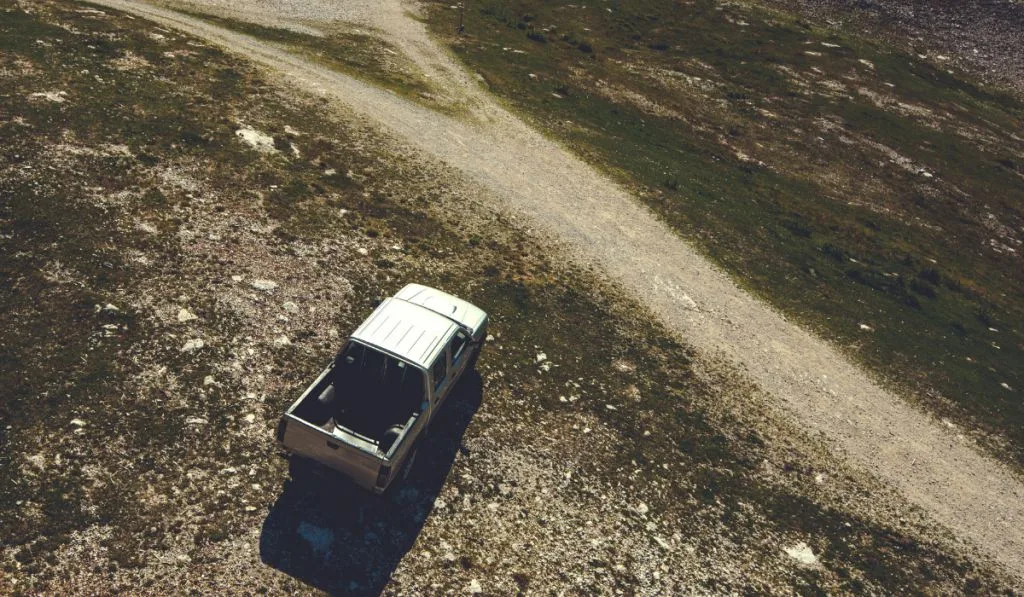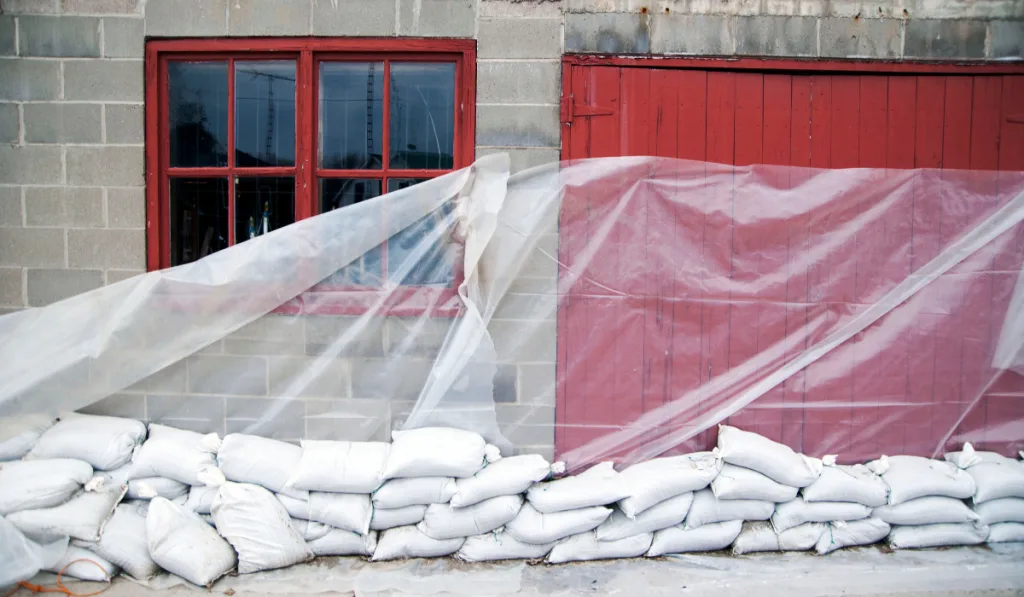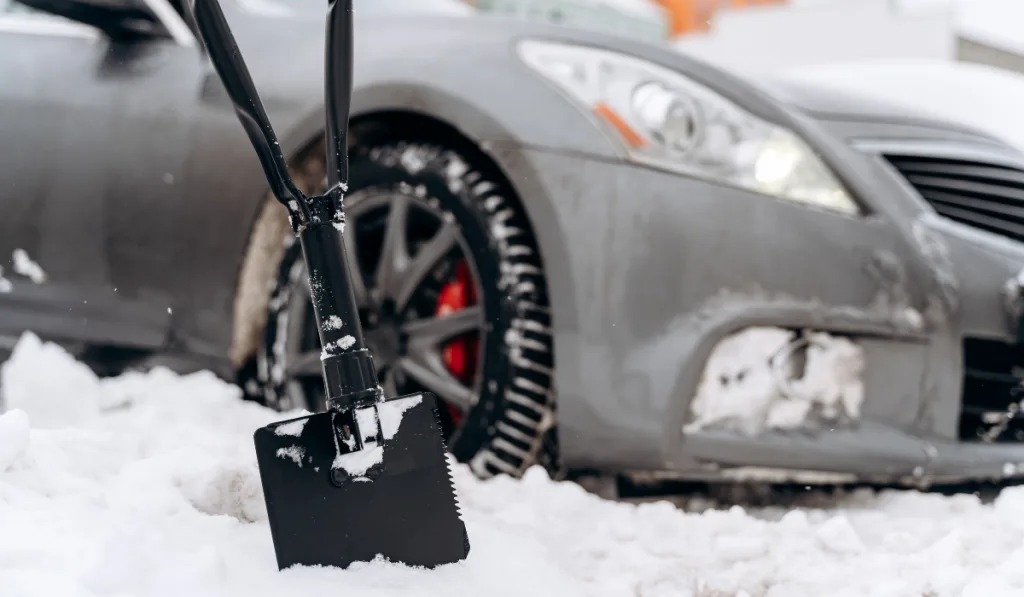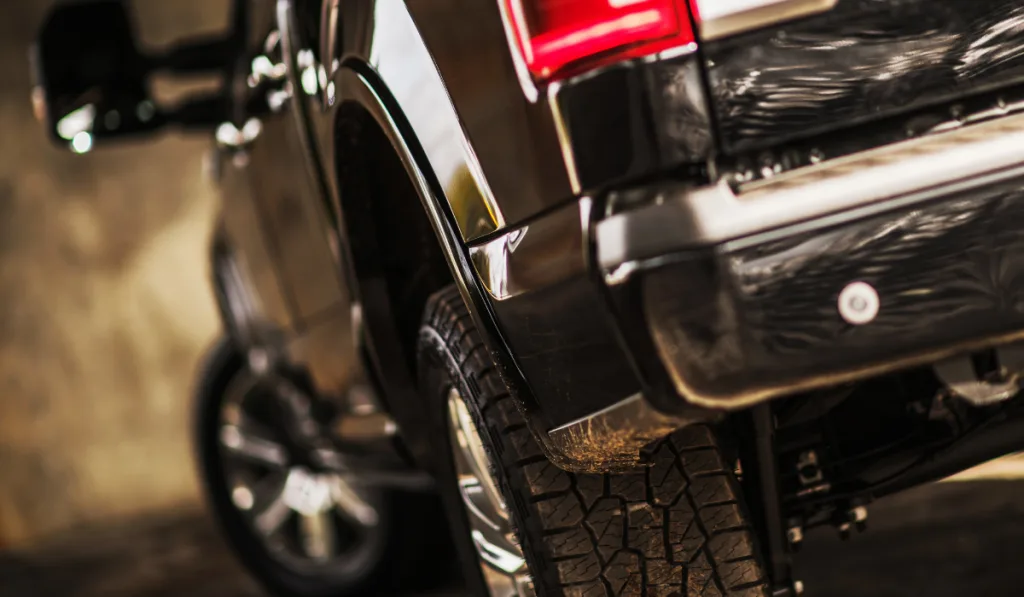Whenever the road is wet, you might have traction issues with your truck sliding on slippery surfaces. If the issues are not solved, this can lead to loss of control, resulting in accidents.
Do you need to weigh down the back end of your truck for more grip on the road? This article will give you details and facts on everything you need to know about weighing down your truck.

Does Adding Weight Improve Traction?
Well, it depends on your truck’s drivetrain type, whether it is an all-wheel-drive, front-wheel drive, rear-wheel drive, or a four-wheel drive. For a fact, adding weight to some trucks might not be the best idea.
However, trucks are meant to carry heavy loads. During wet and slippery road conditions, leaving the back end of the truck empty makes it susceptible to loss of rear-wheel grip, leading to accidents.
In such cases of loss of traction, adding weight to the truck bed is necessary to get more traction. The impacts of adding weight vary greatly from one truck to another, depending on the drivetrain system of each truck.
The drivetrain system implies what wheels spin to move the vehicle, and there are four types, namely:
- All-wheel drive trucks
- Front-wheel drive trucks
- Rear-wheel drive trucks
- Four-wheel drive trucks
So, how does adding weight to different drivetrains affect them?

All-Wheel-Drive Trucks
The all-wheel drivetrains are equipped with sensors that detect when any wheels are losing traction. For this system, only one pair of wheels receives the drive power until a loss of traction is detected.
In case of slipping, the drivetrain system automatically adjusts to the situation by transferring all power to the other wheels to restore stability and help the truck steer ahead.
So all-wheel-drive (AWD) trucks are designed with their weight balanced at the front and the back ends of the truck.
Adding extra weight to an AWD truck, therefore, means that the balance in weight could easily get toppled and confuse the sensor system, and the truck may lose its stability, causing the skidding and sliding you were aiming to avoid.
Front-Wheel-Drive Trucks
If you own a front-wheel-drive (FWD) truck, your truck is stable and better off without additional weight. Trucks are naturally designed to weigh more at the front end because of engine weight and the cab, supplying the necessary traction for stability on the road.
Therefore, adding more weight to the truck bed means that the stability your FWD enjoys with no weight could easily be lost, leading to a loss of traction.
Although adding weight to the FWD might be handy in bringing the car to a halt in slippery conditions, it is more costly in terms of fuel efficiency.

Rear-Wheel-Drive Trucks
The rear wheels receive the drive power for the rear-wheel-drive trucks, and they are responsible for propelling the truck. Therefore, this means that there has to be enough weight on the rear axle to provide sufficient traction on the road.
Lack of sufficient weight with this drivetrain type means that the truck could easily lose balance and spin out, especially under slippery conditions.
However, you should be keen to place just enough weight on the rear axle to restore traction and stability but avoid overloading the truck.
You ought to know the maximum load your truck can carry, per the owner’s manual, to determine the comfortable weight your truck can carry without affecting the fuel efficiency or the truck’s stopping power.
Four-Wheel-Drive Trucks
For a four-wheel drive (4WD), all the drive power is equally distributed across all the wheels, unlike the all-wheel-drive where the propelling power is only available to one set of wheels at a time.
Since the propelling power is equally distributed for the 4WD, it is not necessary to add any weight to the truck bed.
However, if the truck loses traction, it must be something to do with the wheel but not the weight. Consider getting wheels with better treads for more traction.
How to Make a Truck Heavier
There are a couple of ways to weigh down your truck if it’s necessary to weigh it down for more traction.
The conventional standard ways of doing this are using sandbags, metal plates, and even blocks of concrete. There are more complex and advanced ways of increasing weight, such as incorporating integrated reinforcement.
Let’s look at more details.

Sand Bags
Sand, being readily available and heavy enough to provide the necessary weight for more traction, is an option that has long been used to weigh down trucks.
Sand is a good option, thanks to its re-usability and cheap cost, and is easiest to handle.
After the winter, or whenever you no longer need it, you can discard it or find a way to utilize it in your home.
However, depending on your type of truck and the maximum weight it can carry, the number of sandbags needed for the necessary traction varies widely.
If you are unsure of your truck’s weight capacity, you can always experiment with different amounts of sandbags until you get the right weight for the necessary traction.
Placing the bags at the back of the truck is not enough to safely drive about without any safety issues.
Remember, these are heavy sacks and need to be secured at the back to prevent them from rushing forward and causing more hazards in case of an accident.
If left without being secured, the bags will eventually shift and move back and forth in the truck’s bed, and the bags might end up ripping due to too much pressure with the movement.

How to Secure Weights in the Truck Bed
Therefore, how do you safely load and secure the weights in the truck bed?
- Once your sandbags are ready for loading, or whatever load you want to use instead, load the weight directly above the rear axle or somewhere between the cab and the rear axle. This will ensure the weight is evenly distributed across the rear axle, giving more traction to the wheels. However, putting the weight behind the rear axle could worsen the situation because it will ultimately weigh down the very back and lift the front end of the truck, leading to a loss of traction for the front tires.
- Once loaded, you will need to secure the weights. This is crucial because, in the case of an accident, unsecured weights might be responsible for more hazards in the cabin since they would come flying through the back windshield into the cab. To avoid this, use the ropes or ratchet tie-downs to secure the weights, whether the concrete blocks or the sandbags, to the truck bed’s attachment points. It might be challenging to handle sandbags, but an additional wooden frame that holds the bags in place would come in handy, aided by the ropes.
- Lastly, go for a test drive of your truck with the weights installed. However, you need to be extra careful because the traction on wet roads won’t be the same as on dry roads. Since no set amount of weight is suitable for adding traction to any truck, you will need to be careful not to go overboard with the added weight, as this would affect the truck’s mileage and handling.
- Be sure not to overload your truck bed, and if you are uncertain of your truck’s load capacity, keep adjusting and moving the weights on your truck bed till you get satisfied with the truck’s handling on slippery surfaces.
Other Ways to Weigh Down a Truck
Tool Box
As is always the case, toolboxes and their components are always heavy and will make an excellent addition to the truck bed for extra weight.
They could be filled with anything like power tools and equipment, safely locked and secured on the truck-bed for the much-needed extra weight.
Loose Sand
If you are out of sandbags or don’t mind losing most of your truck-bed space, you can directly load the sand into the truck bed. This could be just the trick to weigh down the bed.
Snow
Alternatively, snow can be packed and loaded on a truck bed during the winter. This might not be a regular sight, but you will be surprised how heavy snow can get and how effective it is for weighing down the truck bed.

Use a Weight Bag
Weight bags are water-filled bags specifically designed to add weight to truck beds, essentially providing hundreds of pounds, effectively maintaining the truck’s balance.
Examples of these weight bags are the Shurtrax CLW0056, Shutrax CLW0048, which are well equipped with 25-mm thick walls, UV-resistant protection, heavy brass grommets, and inner nylon mesh reinforcement, among other outstanding qualities, making them durable and sought after alternatives for weighing down trucks.
Their main shortcoming, however, is the cost of acquisition and the difficulty in handling them.
Integrated Reinforcement
The use of this technique entails the use of extra welded seam and duplicate layers of material, providing additional protection against vibrations. This method is suitable because it extends the service life of the reinforced parts and doesn’t take up any extra space.
However, this method might be a bit costly, requiring a professional’s partial disassembly and quality welding.

How Does the Extra Weight Affect Braking?
The extra weight added for traction is not enough to make a difference with the braking capabilities.
On the contrary, when the weight is just right for the proper traction on the road, the tires will get a firmer grip on the road, helping the truck slow down better and faster.
Consider Winter Tires Instead
Before rushing to weigh down your truck, have you considered getting the right tires for your truck?
Regular tires might become rigid in extremely low temperatures and gradually lose traction.
On the other hand, winter tires are specifically designed with rubber integrated with chemicals, enabling the tires to maintain a steady grip, even in extremely low temperatures.
You should also avoid worn-out tires at all costs because worn-out tires will cause loss of traction, and your truck will eventually slip off the road.
Conclusion
Now that you know the drivetrains that need additional weight for more traction and how best to do it, I hope you find the best weighing method that works for you and your truck whenever you plan to use it on a slippery road.
Resources
- https://serioustruck.com/how-to-weigh-down-truck-bed-for-better-traction/
- https://itstillruns.com/weigh-down-back-2wd-truck-7627909.html
- https://theirtrucks.com/things-for-weighing-down-truck-bed/
- https://www.tiresplus.com/blog/driving/adding-weight-truck-bed/
- https://www.lesschwab.com/article/does-adding-weight-in-the-back-improve-my-cars-traction-in-snow.html
- https://truckpowerup.com/best-way-to-add-weight-to-truck-bed/
- https://www.briggssupercenter.com/blog/how-to-properly-weight-your-truck-for-winter-driving/
